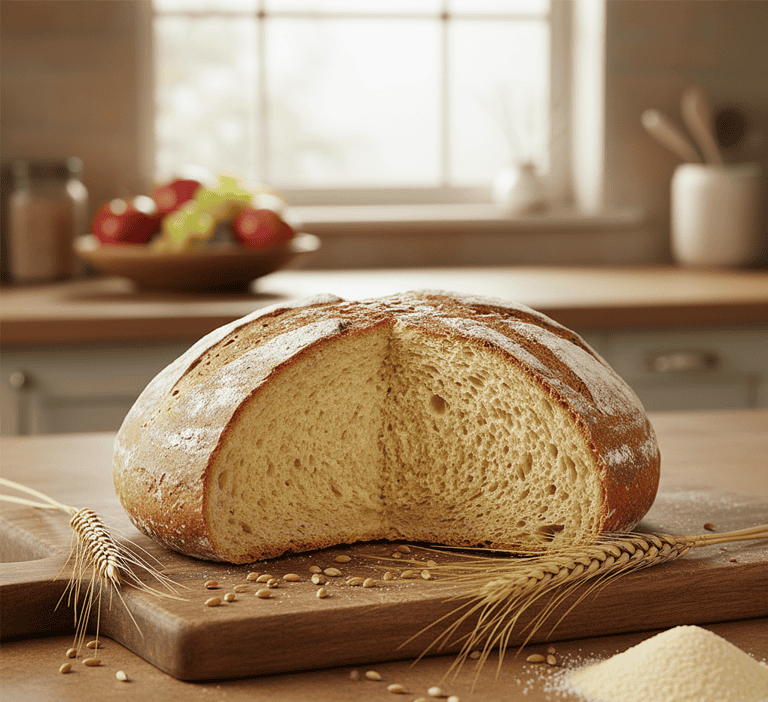Monk Fruit Sweetener – Everything You Need to Know

What Is Monk Fruit?
Monk fruit, also known as luo han guo (Siraitia grosvenorii), is a small melon-like fruit native to southern China and northern Thailand. For centuries, it has been used in traditional Chinese medicine to soothe coughs and respiratory conditions. Today, its extract is widely known as a natural, zero-calorie sweetener, making it a popular alternative to sugar and artificial sweeteners.
The compounds responsible for its intense sweetness are called mogrosides, which are naturally occurring antioxidants. Mogrosides are up to 150–200 times sweeter than sugar, yet they provide no calories.
Foreigner In Romania and in need of a prescription for your chronic treatment?
Contact Dr. Petrache’s Virtual Clinic for any medical issue you encounter while in Romania. Send an email to: clinica@diabet-si-nutritie.ro
How Is Monk Fruit Sweetener Made?
The production process involves:
- Harvesting ripe monk fruits.
- Drying and crushing the fruit.
- Extracting mogrosides by steeping the pulp in hot water.
- Filtering and drying the liquid to obtain a concentrated powder.
The final product is a natural sweetener, available as powder or liquid, sometimes combined with other sweeteners like erythritol to balance taste and texture.
Properties and Characteristics
- Zero calories – contributes no energy.
- Zero glycemic index – does not raise blood sugar.
- Heat stable – can be used in baking and cooking.
- Tooth-friendly – does not promote cavities.
- Clean sweetness – some detect a mild fruity aftertaste.
Benefits of Monk Fruit Sweetener
- Diabetes-friendly – safe for people with diabetes, as it does not affect insulin or glucose levels.
- Weight management – helps reduce calorie intake without sacrificing sweetness.
- Dental health – does not feed oral bacteria.
- Antioxidant effects – mogrosides have shown anti-inflammatory and antioxidant activity in lab studies.
- Natural origin – unlike artificial sweeteners, it comes from a traditional fruit source.
Possible Downsides and Limitations
- Availability – less common compared to other sweeteners.
- Higher cost – more expensive than sugar or sugar alcohols.
- Blends with other sweeteners – many commercial products mix monk fruit with erythritol, which may cause digestive discomfort in some people.
- Taste differences – while generally clean, some may notice a light aftertaste.
Monk Fruit and Diabetes
Because it has zero glycemic index and does not trigger insulin release, monk fruit sweetener is considered safe for people with diabetes. It can be used in beverages, desserts, and cooking without causing spikes in blood sugar.
Unlike some artificial sweeteners, there is no evidence that monk fruit disturbs the gut microbiome or has long-term harmful effects.
Passing through Romania and need a prescription for your chronic treatment?
Contact Dr. Petrache’s Virtual Clinic for any medical issue you encounter while in Romania. Send an email to: clinica@diabet-si-nutritie.ro
Culinary Uses of Monk Fruit
Monk fruit sweetener can be used for:
- sweetening drinks (coffee, tea, smoothies)
- sugar-free desserts (cakes, cookies, mousses)
- sauces, marinades, and dressings
- protein bars, yogurt, and health snacks
Since it is much sweeter than sugar, only very small amounts are needed. In baking, it is often mixed with erythritol to mimic sugar’s bulk and texture.
Comparison With Other Sweeteners
- Monk fruit vs. Sugar – zero calories, no effect on blood sugar, unlike sugar.
- Monk fruit vs. Stevia – both are natural, zero-calorie sweeteners; stevia may have a bitter aftertaste, monk fruit tends to taste cleaner.
- Monk fruit vs. Erythritol – erythritol is well tolerated but may cause bloating at high doses; monk fruit does not.
- Monk fruit vs. Artificial sweeteners – unlike aspartame, sucralose, or saccharin, monk fruit is natural and less controversial regarding safety.
Who Should Be Careful?
Monk fruit is considered safe for almost everyone, including children and pregnant women. However:
- people sensitive to erythritol should check labels, since many monk fruit products are blends
- some may find the flavor different from sugar and need time to adapt
- first-time users may want to start with small amounts until they find the right balance in recipes
Tourist in Romania and in need of a prescription for your chronic treatment?
Contact Dr. Petrache’s Virtual Clinic for any medical issue you encounter while in Romania. Send an email to: clinica@diabet-si-nutritie.ro
Conclusion
Monk fruit sweetener is a natural, zero-calorie alternative to sugar, with a clean taste, no glycemic impact, and potential antioxidant benefits. While more expensive and less widely available than other sweeteners, it is an excellent choice for people with diabetes, those managing their weight, or anyone looking to reduce sugar intake.
As with any dietary change, the key is moderation and balance. Monk fruit can be a valuable ally in cutting down on sugar, but it works best as part of a varied, whole-food diet that supports long-term health.
Follow us on:
- FaceBook: Diabetes & Nutrition;
- YouTube: Diabetes Facts.
















